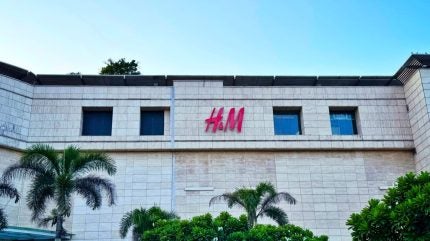
Swedish fashion retailer H&M has entered India’s beauty market, a decade after launching its first clothing and home outlets in the country in October 2015, as reported by The Times of India.
The move marks the company’s entry to the beauty and personal care (BPC) segment, positioning it against existing brands such as Hindustan Unilever’s Lakme, L’Oréal, Reliance’s Tira and Nykaa.

Discover B2B Marketing That Performs
Combine business intelligence and editorial excellence to reach engaged professionals across 36 leading media platforms.
The retailer will introduce its private-label beauty collection, which includes makeup, perfumes and beauty accessories.
The range will be available exclusively at H&M fashion stores and through its online platform.
H&M aims to cater to India’s mass-affluent demographic, with makeup products priced below Rs799 ($9) and perfumes from Rs1,299.
A large share of the brand’s initial product portfolio, including cosmetics, fragrances and accessories, has been produced locally, while select items continue to be sourced internationally to uphold quality standards.

US Tariffs are shifting - will you react or anticipate?
Don’t let policy changes catch you off guard. Stay proactive with real-time data and expert analysis.
By GlobalDataThe entry comes as India’s beauty and personal care market is projected to reach $34bn by 2028, driven by rising demand from younger and mass-affluent consumers.
H&M beauty global general manager Cathrine Wigzell told The Times of India: “We bring a trend-driven, inclusive private-label assortment designed to complement our fashion offering – allowing customers to create a complete look from head to toe.
“Our strong brand presence in fashion absolutely helps us; customers already know and trust H&M as a style authority, and beauty is a natural step in that journey.
“Our positioning is not about exclusivity but about making high-quality, fashion-forward beauty available to everyone.”
H&M posted fall in its operating profit to Skr5.9bn for the second quarter ended on 31 May.
The operating margin dropped to 10.4% from 11.9%, owing to a reduced gross margin and unfavourable currency exchange impacts.





